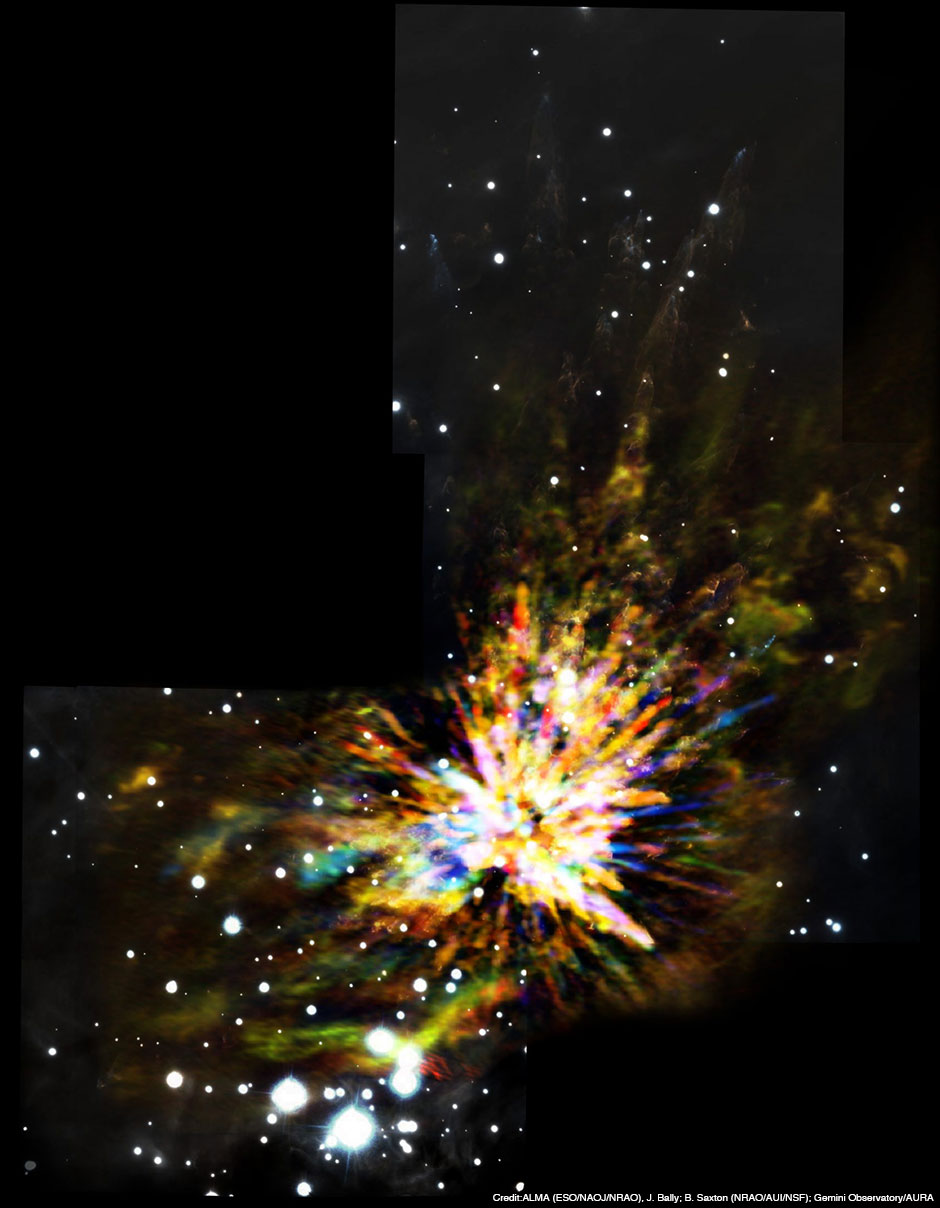Outer Space Fireworks Made by a Huge Baby Star
Astrophotography・

Observing “Orion KL,” which shines brightly in infrared in the Orion Nebula, ALMA clearly imaged gas scattering in all directions. It is thought that here giant baby stars collided, or at least had a near miss, about 500 years ago, scattering the gas and dust around the stars like fireworks. This picture is a composite of Orion KL images taken with ALMA and the Gemini South telescope. ALMA captured the carbon monoxide gas that is expanding near the center, and its movement is shown in color. The gas moving towards us is shown in blue and the gas moving away from us is shown in red.
Text by: Masaaki Hiramatsu (NAOJ Chile Observatory)
Big Explosion Occurred in the Orion Nebula 500 Years Ago
The first time that I saw this image was when I introduced the unpublished data for Orion KL to one of my collaborators. My first reaction was surprise, “Is that a chestnut in its burr or a sea urchin?” Then looking at the high-quality image of the individual high-speed jets shown in red and blue sharply resolved like countless needles, all I could say was “ALMA is so great!” Based on discussions at that time, we began international collaborative research using ALMA because we had not yet established a self-coherent scenario that could reconcile the baby star proposed to be in the center of the “fireworks” and other results that I had obtained using ALMA. This image made me think that the mystery of this baby star could be elucidated in the near future if we could use the improved capabilities of ALMA.
Text by: Tomoya Hirota (Mizusawa VLBI Observatory, NAOJ)
Translations by: Hiroko Tsuzuki and Ramsey Lundock (Public Relations Center, NAOJ)
Image Data
| Object | Orion KL |
|---|---|
| Telescope | ALMA / Gemini South |
| Credit | ALMA (ESO/NAOJ/NRAO), J. Bally; B. Saxton (NRAO/AUI/NSF); Gemini Observatory/AURA |